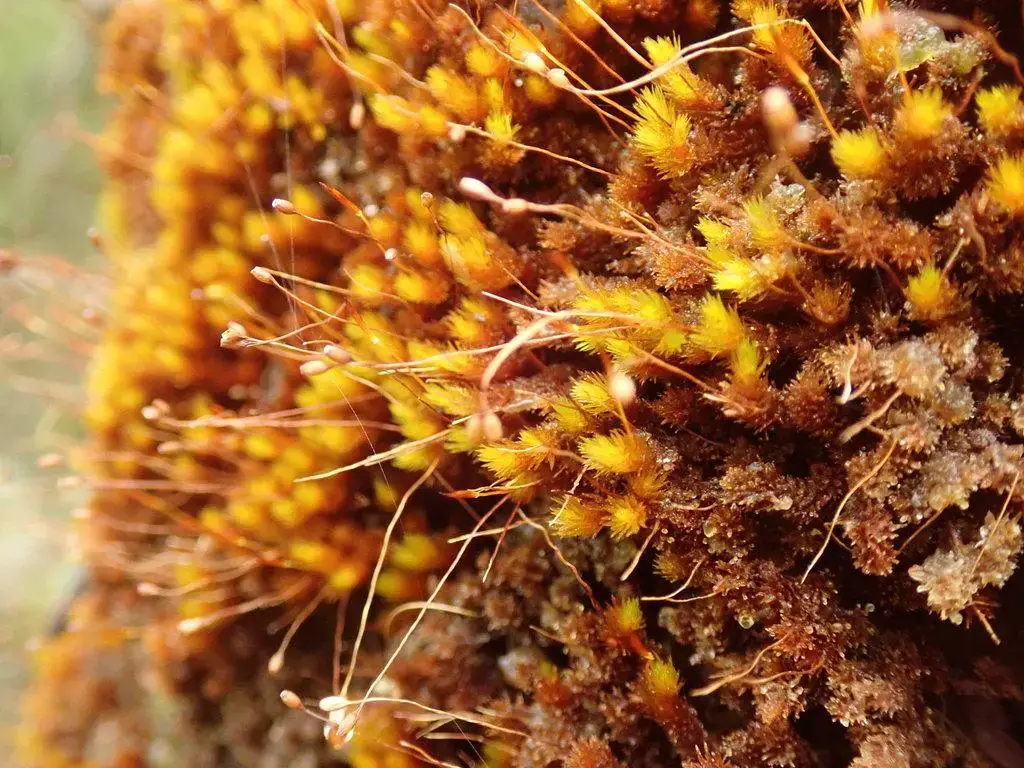Erpodium-glaziovii-Hampe-A-Plant-B-Cross-section-of-stem-C-D-Leaves-E-Leaf.ppm from: https://www.researchgate.net/figure/Erpodium-glaziovii-Hampe-A-Plant-B-Cross-section-of-stem-C-D-Leaves-E-Leaf_fig4_268271958
Exploring the Fascinating World of Macromitrium glaziovii Hampe Moss

large.jpeg from: https://inaturalist.nz/observations/88236610
Introduction

Macromitrium-prolong01l.jpg from: https://www.digital-museum.hiroshima-u.ac.jp/~museum/habit/moss_habit/Macromitrium prolongatum/Macromitrium_prolongatum.html
Mosses are often overlooked, but they play a vital role in many ecosystems around the world. One particularly interesting species is Macromitrium glaziovii Hampe, a moss in the Orthotrichaceae family. In this blog post, we’ll take a closer look at this fascinating plant and explore its unique characteristics, global distribution, and ecological importance.
Background on Mosses
Mosses are small, non-vascular plants in the division Bryophyta. Unlike other plants, they lack true roots, stems, and leaves. Instead, they have leaf-like structures called phyllids that absorb water and nutrients. Mosses reproduce via spores rather than seeds and are found in a wide range of habitats, from arctic tundra to tropical rainforests.
Macromitrium glaziovii Hampe: A Closer Look
Macromitrium glaziovii Hampe is a species of moss found in the Orthotrichaceae family, which contains around 900 species worldwide. The genus name Macromitrium comes from the Greek words “makros” meaning large and “mitra” meaning cap, referring to the large calyptra (cap) that covers the capsule.
Morphology and Identification
M. glaziovii forms dense mats or cushions on tree bark, rocks, or soil. Its stems are creeping to ascending, often branched, and covered in small, overlapping leaves. The leaves are ovate to lanceolate, with a pointed tip and toothed margins. Capsules are cylindrical and emerge on short setae (stalks). The calyptra is large, plicate (folded), and covers most of the capsule.
Global Distribution and Habitat
This moss species is found in tropical and subtropical regions of the Americas, including Mexico, Central America, the Caribbean, and South America. It grows in moist, shaded habitats such as cloud forests, rainforests, and riparian zones. M. glaziovii is epiphytic, meaning it grows on other plants (usually trees) but is not parasitic.
Ecological Roles and Adaptations
Like other mosses, M. glaziovii plays important ecological roles:
Water and nutrient cycling: Mosses absorb and retain water, helping to regulate moisture in their environment. They also trap and recycle nutrients that might otherwise be lost.
Habitat for other organisms: Many small invertebrates, such as tardigrades, rotifers, and nematodes, live among moss cushions. Mosses also provide nesting material for birds and small mammals.
Erosion control: By stabilizing soil and trapping sediment, mosses help prevent erosion on slopes and streambanks.
M. glaziovii has several adaptations that allow it to thrive in its habitat:
- Poikilohydry: Like most mosses, it can tolerate desiccation and quickly rehydrate when water is available.
- Leaf structure: Its overlapping leaves help trap and retain moisture.
- Asexual reproduction: In addition to spores, M. glaziovii can reproduce via fragmentation, allowing it to spread locally.
Conclusion
Macromitrium glaziovii Hampe is a small but mighty moss with a fascinating biology and important ecological roles. By understanding and appreciating mosses like M. glaziovii, we gain a deeper respect for the complexity and resilience of life on Earth. Next time you’re in a tropical forest, take a closer look – you might just spot this amazing little plant!
What other overlooked organisms in your local ecosystem have caught your interest? Share in the comments below!